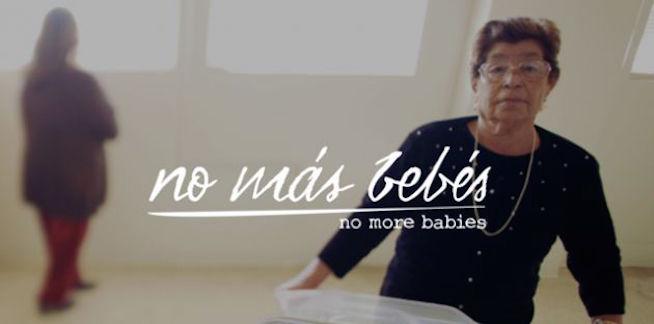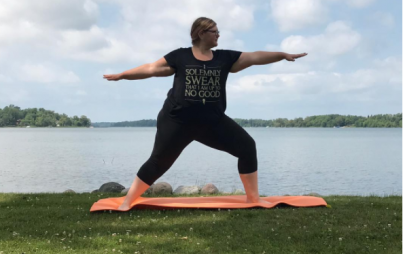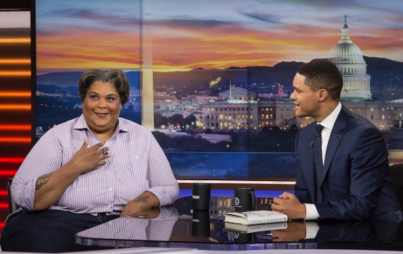
No Más Bebés is the forthcoming documentary from director Renee Tajima-Peña and producer Virginia Espino. The documentary takes an intimate look at the lives of the Mexican-American women of Los Angeles who were forcibly sterilized in the 1970s. Premiering on PBS on February 1, this work took Renee and Virginia over six years to make. We spoke with them about the documentary, the court case that inspired it, and the lasting effect it had on their own concepts of motherhood and reproductive justice.
The origin story for No Más Bebés is really amazing. Could you tell our readers a little bit about how the two of you ended up making this film?
Renee: I first heard about the story from producer Virginia Espino, who is a historian. We’re neighbors and we have boys who are the same age, and when they were small we used to get together for playdates. We’d chat about our work and Virginia told me about her research on Mexican-American women who’d been sterilized at Los Angeles county hospital. We live only a few miles from the hospital, but I ‘d never heard of the sterilizations. Here I was, a new mother completely enthralled with having been pregnant, with childbirth and just the whole package of being a parent. All the clichés about the joys of motherhood, that was me. So when Virginia told me about women who had been sterilized without their consent, it hit me in the gut. I came of age during the Roe v. Wade era, and like a lot of middle-class women of my generation, I understood that Supreme Court decision, and the whole issue of reproductive rights, as being a question of abortion. I never considered being denied the ability to have a child. It was stunning to me. We decided that we should make a film about the story. As it turned out, Virginia moved outside the country for a number of years, but when she came back we started the project.
Virginia: We are part of a small community of women of color academics and artists who work to shed light on hidden and/or ignored histories. A mutual friend (also a culture producer) introduced us because Renee and I were and are neighbors and mothers parenting toddlers. Our boys were one year at the time that we met. We discussed and shared our projects while our children played. I was in the process of designing a research project on the sterilizations and the activism that ended it. Renee immediately thought it would make a great documentary…of course, I agreed. I wanted this history to reach a wide audience many academic books never reach.
So much of the discussion surrounding reproductive rights focuses on the right to terminate a pregnancy, but your documentary argues for the right to have a pregnancy. How can we reframe our understanding of choice to be more robust and intersectional?
Renee: I think the documentary makes the point that the right to terminate a pregnancy, and the right to have a pregnancy, are two sides of the same idea. This case, the 1975 lawsuit Madrigal v. Quilligan, is an untold chapter in the history of Roe v. Wade. It was filed only two years after the Supreme Court decision. The plaintiff’s attorneys, Antonia Hernández and Charles Nabarrete, asserted in the lawsuit that under Roe v. Wade, a woman’s right to bear a child is also constitutionally protected.
That’s how the Chicana — and Puerto Rican, African-American, and other feminists involved in anti-sterilization abuse organizing — were rethinking the idea of reproductive freedom as intersectional back in the 1970s. They had the double-consciousness of racism and gender, that those factors affected a woman’s right to make decisions about her own body. Or make that triple-consciousness, because poor women of all colors found their reproductive autonomy at risk. It’s a part of the tension with the largely White and middle class mainstream feminist movement, which was driving the idea that reproductive rights meant abortion rights. They weren’t affected by the barriers to having safe, healthy pregnancies and childbirth that poor women faced.
I’m Asian-American, but I grew up with all the privileges of being middle-class. I also never considered being denied the choice to have a child. When I was growing up, the debate over reproductive rights was always about abortion. But I do remember my mother telling me that she and my aunts were told by their doctors, after their third babies, that it was time for their hysterectomies. That’s crazy. There’s no medical indication for a sterilization just because you’ve had a certain number of babies. Looking back, was it a question of race? I don’t know.
With the story of the Madrigal 10, the women in the LA county hospital case, there was no one, single reason why they were sterilized without consent. There was an intersection of factors. In making the film, I found that people were always looking for the villain in the story — a bad guy to blame for the sterilizations. That struck me as too simplistic. There was what the scholar Elena Gutierrez has called a “perfect storm” of systemic factors at work — fears about over-population, attitudes about immigrants, the idea that poor women were having babies to go on welfare, big pots of money for family-planning programs, lack of consent procedures in hospitals, language barriers, on and on. And there was a whole range of individual accountability. It would be simple to solve these kinds of problems of it was a matter of the good guys and the bad guys, but that’s rarely the case.
Virginia: Listen to women of color reproductive justice advocates. There are many. Invite us to speak to your orgs. Don’t speak for us. Let us speak for ourselves. Sister Song, National Latina for Reproductive Justice, California Latinas for Reproductive Justice and Health Families have been re-framing this discussion for the past 20 years. Look to their websites, follow them on Twitter and Facebook, support their struggles.
The making of this documentary took place over six years. What is it like to devote so much time to one project?
Renee: Six years is nothing when you’re making a film like this. It’s pretty much par for the course, although if I had a trust fund or a good Powerball number, it could have gone a bit faster. First, it takes a long time to raise the money, and that never ends. Then there’s the research. This is a legal case so we wanted to be meticulous about the research. Also, the story is set in East Los Angeles, in an immigrant community that was always overlooked. So we had a hard time finding visible evidence — footage, news coverage, images. That’s always the problem with making history films about people of color. We weren’t pictured. Our communities weren’t pictured.
What really made the difference for us was accessing films shot by young Chican@ filmmakers and journalists during the '60s and '70s. Really incredible footage by people like Moctezuma Esparza, Sylvia Morales, Jesus Trevino, the list goes on. It’s part of the whole story of the Chican@ movement and the transformation at that time. There were young civil rights attorneys like Antonia Hernández and Charles Nabarrete, activists and politicians like Gloria Molina, and journalists like Frank Cruz, all just getting started and a part of the community as it was becoming. Frank was the first Latino television anchor in Los Angeles and he wanted to counter the stereotypical gang, crime-focused coverage of the Chican@ community that dominated the news. So he insisted on covering stories that mattered on the East side, like the Madrigal v. Quilligan case. He not only had to fight with editors, but even his camera crews didn’t want to cover the Mexican-American community. Without his footage of the trial, I don’t know how we could have told the story. All of these people were pioneers. So the fact that we have footage of everyday life in Boyle Heights and East LA, in schools and parks, close-ups of faces and families, and even coverage of the trial itself — it’s because of those young journalists and filmmakers.
Committing to document such a disturbing reality of our country’s reproductive health practices must have had a huge effect on you personally, especially as mothers. How did this change your own views on women’s reproductive rights?
Renee: When I started the film, I was unfamiliar with the reproductive justice movement, and the framework of intersectionality. I just thought it was a horrendous story, and I wanted to figure out what had happened. I learned about the complexities of that history during the process. But I think that’s what most documentary filmmakers do, and that’s why we make films — to figure things out. I had the benefit of working alongside a historian, Virginia. She already had a deep knowledge of the story and the context, and had done a ton of historical research.
Before No Más Bebés I’d been thinking a lot about the meaning of family, and how experiences like migration, poverty, and war collide with the visceral bonds of love. After I had my son, I worked on projects that were very personal, in the sense that I wanted to explore those ideas of family bonds. My grandmother used to call a parent’s love for their child “crazy love,” and I definitely felt that with my own child. One of the films is about my husband’s family, Calavera Highway. Armando grew up in a family of migrant farm workers, and I followed him as he carried his mother’s ashes back to South Texas and reunited with his six brothers along the way. My husband thought of his family as so many tumbleweeds — they had all scattered to different points along the migrant trail, from Texas up to Washington State. There was always this deep yearning to reunite. Then I made a film for the PBS series, The New Americans, about a meatpacker in southwest Kansas who was trying to bring his family to the US from Mexico. He’d been working here alone for 13 years. I also filmed a Vietnamese refugee meatpacker who was trying to bring over a long-lost daughter. Sometimes in the editing room we’d joke that there were always grown men crying in my films. But there is something about family, and the longing to connect when you’ve been separated by borders, or because you can’t find work at home, or because you’ve had to flee.
Another story my mother would always tell me: When she was little, her older brother Akira was sent to live in Japan with an aunt and uncle who couldn’t have children. This was the 1930s, and he ended up caught there during the war so they never saw him again for 40 years. My mother remembers seeing Akira off when his ship sailed from San Pedro to Japan. He was only 11 years old. They held on to two ends of a streamer as long as they could, until the ship sailed away and it slipped from her hands. I’ll never forget all the sadness conjured in that one streamer.
These stories were deeply emotional, but there is also a politics to each one. And you can’t get any more emotional, intimate, and political as with a woman’s reproductive reality. Making No Más Bebés helped me think about those connections.
One funny factoid about the making of the film, which I guess could happen when you take six years in production, is there were three babies born to women in our crew during that time. Actually, the last one was a few days after our world premiere, so she was able to come to the screening. It seemed like the majority of the film team were moms, although they didn’t all start the project that way.
Virginia: It was an honor to meet the plaintiffs in Madrigal v. Quilligan as well as the community activists and activist lawyers. Bearing witness to testimony from those who fought for change was life-affirming. US history is full of struggles for justice. In fact, one of my favorite history books is titled Struggles for Justice: Social Responsibility and the Liberal State. Documenting, in such a powerfully visual way, the history of a community that stood up to a powerful institution was a privilege. And the response to the film has made it all worth it. We’ve created a counter narrative to the negative images and stereotypes the public receives about Latinas. In doing so we hope to reclaim a bit of justice for the women and for all victims of coercive sterilization practices.
What has/can be done to make sure we allow all women the full range of choice and autonomy over their own reproduction?
Renee: One thing that didn’t happen during the 1970s, and is not happening enough now — is listening to the voices of women whose reproductive freedom are the most at risk and making that a part of policy and change. Regardless of what the laws are, a woman doesn’t really have a choice if they’re denied decent healthcare or the ability to exercise their reproductive rights because of poverty, race, or their immigration status. That’s an argument that the reproductive justice movement has been making for a long time. During the last few months I’ve listened to pundit after pundit, on endless news shows, discuss the defunding of Planned Parenthood. I can’t remember a time that low-income women, who actually uses those clinics, were at the table alongside those talking heads on TV and giving their perspective on the debate. Those are the women who actually use the clinics. And I’m not assuming they would have a monolithic point of view, either. It’s unconscionable that they weren’t heard 40 years ago, and their voices are still marginalized today.
Virginia: We need to be informed and organized and we need to reach out to the medical community. We’ve had powerful screenings with medical students and we hope that this movie appeals to that group. We’d like to keep communication open with the medical community. There are a lot of wonderful doctors out there doing great work and there are many young students who enter the field of medicine for noble reasons. We hope our film can help them be better at what they do.
What would you suggest our readers do to learn more about forced or coerced sterilization in the US (besides seeing No Más Bebés, of course!)? What should we be doing to spread awareness and understanding about this issue?
Renee: I hope readers will look at the full spectrum of reproductive freedom and justice — not only sterilizations, but the right to not have a child, or to have a child and raise that child in dignity. We’ve been working with reproductive groups, like California Latinas for Reproductive Justice, to use the film to get that conversation going. I don’t think films change society, I think that people do when they get organized, and there are groups like CLRJ that have been doing that groundwork for a long time. And that movement is building every year.







